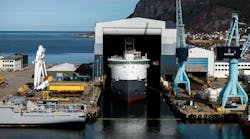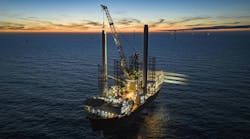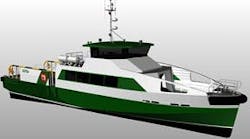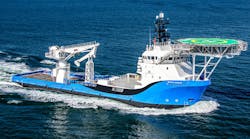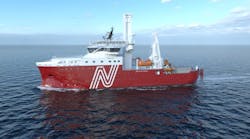Jonathan Martinez
Dockwise
Float-over installation has become an attractive alternative to heavy-lift crane installation for offshore construction, as increasing size and weight of offshore platform topsides continually exceed the lifting capacity of cranes. One out of six units weighs more than 12,000 tons (10,886 metric tons).
Dockwise Ltd. analyzed topsides installation trends from 2005 to 2012, and found that the number of offshore installations has grown over the past decade and is expected to increase in the future. The demand for cost-effective and more flexible alternatives to crane installations was the driving force behind float-over installation using semisubmersible heavy transport vessels (HTVs).
From 2005 to 2012, the offshore crane lift method took the lion's share totaling 115 (44%) of the 264 installations. Yard lift and float-over installations totaled 112 (42%) and 37 (14%), respectively. Of the 264 topsides, 192 (73%) – Type A – weighed between 4,000 and 12,000 tons (3,629 and 10,886 metric tons), and 72 (27%) – Type B – weighed more than 12,000 tons. While 6% of the Type A topsides were installed by float-over, more than one-third of the Type B topsides were installed by float-over. This indicates that float-over installation is growing as a preferred installation method as topsides weight reach 12,000 tons and more.
An estimated 480 Type A and 93 Type B production platforms (fixed, floating, or gravity-based) are expected to be installed between 2014 and 2018. For the majority of Type B units, the offshore installation approach is known: 14 are expected to be installed by float-over, 12 by crane lift, and one by yard lift, 19 are unknown or yet to be decided. A total of 47 FSPOs fall under Type B units, but these units require a different installation approach other than float-over or heavy-lift. Of the 46 Type B productions units within scope (non-FSPO and known installation), 52% of the installation will be conducted by float-over. The majority of the 19 production platforms whose installation approach is unknown or to yet to be decided are expected to be float-over installations.
In the next few years, an estimated 660 offshore platforms are expected to be constructed of which 180 are expected to weigh more than 12,000 tons. The need to develop fields in remote locations where floating and gravity-based production units are required is driving the demand for larger offshore units.
Why float-over?
The float-over installation approach has been proven for more than 30 years, and is regaining interest from the oil and gas industry.
To determine if a float-over installation is the best choice, one needs to review the advantages and disadvantages.
- Advantages
- – Reduced schedule interfaces
- – Reduced risk
- – Capacity
- – Minimize offshore exposure hours
- – Reduced offshore hookup and commissioning
- – Safety
- – Vessel availability
- – Cost savings
- Disadvantages
- – Limited workability
- – Jacket slot requirements
- – Transport and installation support conditions
- – Installation method design implications
- – Early commitment to contractor.
Displaying 1/2 Page 1,2Next>
View Article as Single page
